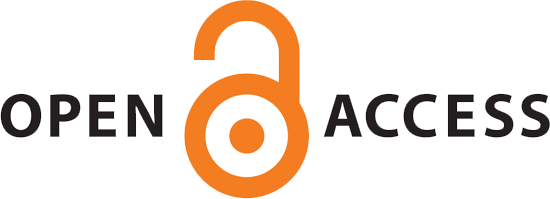Suppressing Postoperative Inflammation with Intravenous Ketamine as an Adjunct in Epidural Hysterectomy: A Clinical Study of C-Reactive Protein and Neutrophil–Lymphocyte Ratio
Abstract
Background: Hysterectomy often triggers a systemic inflammatory response, increasing biomarkers like C-reactive protein (CRP) and the neutrophil-lymphocyte ratio (NLR), which can delay recovery and raise complication risks. Ketamine, a common anesthetic, possesses anti-inflammatory properties that may modulate this postoperative response. This study aimed to further examine the effects of ketamine on CRP and NLR levels in patients undergoing hysterectomy.
Methods: This double-blind randomized clinical trial included 28 adult female patients (ASA I–II) undergoing elective abdominal hysterectomy under epidural anesthesia. Patients were randomized to receive either 0.5 mg/kg intravenous ketamine (intervention group) or no ketamine (control group). Serum CRP and NLR were measured preoperatively and at 8 and 24 hours postoperatively. The visual analog scale was used to evaluate pain level, data were processed with the appropriate statistical test, and a p-value < 0.05 is considered significant.
Results: Our study discovers that intravenous ketamine reduced postoperative inflammatory markers significantly. Postoperative measurements at 8 and 24 ours proved that the ketamine group had lower CRP and NLR levels significantly (p<0.05). Patients receiving ketamine showed a non-significant reduction in VAS pain scores compared with controls. No participant in either group needed additional opioids for pain control.
Conclusion: Intravenous ketamine decreased postoperative inflammatory response significantly in hysterectomy patients receiving epidural anesthesia, as proved by lower CRP and NLR. Ketamine seemed to improve patient comfort by lowering pain intensity. Combining epidural anesthesia with ketamine may be a viable strategy to suppress inflammation and enhance recovery after hysterectomy.
[2] Chen CJ, Thompson H. Uterine Prolapse(Archived). StatPearls, Treasure Island (FL): StatPearls Publishing; 2025.
[3] Gill P, Patel A, Van Hook JW. Uterine Atony. StatPearls, Treasure Island (FL): StatPearls Publishing; 2025.
[4] Ramirez PT, Frumovitz M, Pareja R, Lopez A, Vieira M, Ribeiro R, et al. Minimally Invasive versus Abdominal Radical Hysterectomy for Cervical Cancer. N Engl J Med 2018;379:1895–904.
[5] Polen-De C, Bakkum-Gamez J, Langstraat C. Route of Hysterectomy for Benign Disease: Abdominal Hysterectomy. J Gynecol Surg 2021;37:116–21.
[6] Rosenbaum SB, Gupta V, Patel P, Palacios JL. Ketamine. StatPearls, Treasure Island (FL): StatPearls Publishing; 2025.
[7] Zanos P, Moaddel R, Morris PJ, Riggs LM, Highland JN, Georgiou P, et al. Ketamine and Ketamine Metabolite Pharmacology: Insights into Therapeutic Mechanisms. Pharmacol Rev 2018;70:621–60.
[8] Karnina R, Rahmadani S, Faruk M. Incidence of Hypotension, Bradycardia, and Post-operative Nausea and Vomiting with Spinal Anesthesia in Cesarean Section Patient. Open Access Maced J Med Sci 2022;10:1602–6.
[9] Li J-M, Liu L-L, Su W-J, Wang B, Zhang T, Zhang Y, et al. Ketamine may exert antidepressant effects via suppressing NLRP3 inflammasome to upregulate AMPA receptors. Neuropharmacology 2019;146:149–53.
[10] AlAshqar A, Reschke L, Kirschen GW, Borahay MA. Role of inflammation in benign gynecologic disorders: from pathogenesis to novel therapies†. Biol Reprod 2021;105:7–31.
[11] Peng J, Dong R, Jiao J, Liu M, Zhang X, Bu H, et al. Enhanced Recovery After Surgery Impact on the Systemic Inflammatory Response of Patients Following Gynecological Oncology Surgery: A Prospective Randomized Study. Cancer Manag Res 2021;13:4383–92.
[12] Fang Y, Zheng T, Zhang C. Prognostic Role of the C-Reactive Protein/Albumin Ratio in Patients With Gynecological Cancers: A Meta-Analysis. Front Oncol 2021;11:737155.
[13] Kurnia NF, Punagi AQ. The Relationship between Neutrophil on Lymphocyte Ratio with Clinical Stage of Nasopharyngeal Carcinoma Patients. Nusant Med Sci J 2022:50–60.
[14] Rahman Abd, Indra I, Ferianto D, Nelwan BJ, Ardiansyah BD, Alvina Y, et al. Relationship of Tumor-Associated Neutrophil Expression and Neutrophil-to-Lymphocyte Ratio with Clinical Response to Neoadjuvant Chemotherapy in Locally Advanced Breast Cancer. Asian Pac J Cancer Biol 2025;10:13–9.
[15] Zou P, Yang E, Li Z. Neutrophil-to-lymphocyte ratio is an independent predictor for survival outcomes in cervical cancer: a systematic review and meta-analysis. Sci Rep 2020;10:21917.
[16] Jonska-Gmyrek J, Gmyrek L, Zolciak-Siwinska A, Kowalska M, Fuksiewicz M, Kotowicz B. Pretreatment neutrophil to lymphocyte and platelet to lymphocyte ratios as predictive factors for the survival of cervical adenocarcinoma patients. Cancer Manag Res 2018;10:6029–38.
[17] Singh D, Kashav R, Magoon R, Kohli JK, Kaur M, Gupta A, et al. Evaluation of Low-Dose Ketamine on Inflammatory Biomarker Profile Following Off-Pump Coronary Artery Bypass Grafting. J Card Crit Care TSS 2020;04:33–9.
[18] Bartoc C, Frumento RJ, Jalbout M, Bennett-Guerrero E, Du E, Nishanian E. A randomized, double-blind, placebo-controlled study assessing the anti-inflammatory effects of ketamine in cardiac surgical patients. J Cardiothorac Vasc Anesth 2006;20:217–22.
[19] Jonkman K, Dahan A, van de Donk T, Aarts L, Niesters M, van Velzen M. Ketamine for pain. F1000Research 2017;6:F1000 Faculty Rev-1711.
| Files | ||
| Issue | Article in Press |
|
| Section | Research Article(s) | |
| Keywords | ||
| Hysterectomy Ketamine C-Reactive Protein Inflammation Epidural Anesthesia Pain Management | ||
| Rights and permissions | |

|
This work is licensed under a Creative Commons Attribution-NonCommercial 4.0 International License. |




